Abstract
Chickens in groups of 40 were infected orally with a nalidixic acid-resistant mutant of Salmonella typhimurium and then fed continuously on diets containing ampicillin, chloramphenicol, furazolidone, neomycin, oxytetracycline, polymixin, spectinomycin, streptomycin or a mixture of trimethoprim and sulphadiazine. The amount of S. typhimurium excreted in their faeces was estimated at intervals by culture on brilliant green agar containing sodium nalidixate, both direct and after enrichment in selenite broth; the amount of Escherichia coli excreted was estimated by culture on MacConkey agar. The feeding of diets containing 500 mg./kg. of ampicillin, furazolidone, neomycin, polymixin, spectinomycin or streptomycin or 100 mg./kg. of trimethoprim and 500 mg./kg. of sulphadiazine for 46 days reduced to a varying degree the amount of S. typhimurium and E. coli excreted, the greatest reduction in S. typhimurium being brought about by the last treatment. The effect was less obvious when the concentration of the antibiotics in the food was decreased fivefold. An important reason for the very limited effect of some of the antibiotics was the emergence of antibiotic-resistant populations of S. typhimurium and E. coli. High concentrations of antibiotic-resistant organisms also arose in the faeces of the chickens fed diets containing tetracyclines and chloramphenicol, treatments which had no apparent effect on the amount of S. typhimurium and E. coli excreted. Much of the antibiotic resistance encountered was determined by R factors, a particular R factor usually being found in the E. coli populations of individual chickens before it was found in their S. typhimurium populations. No S. typhimurium or E. coli were isolated that possessed R factors determining resistance to polymixin, furazolidone or trimethoprim. No S. typhimurium or E. coli were isolated that were polymixin-resistant and no S. typhimurium that were furazolidone-resistant. The few trimethoprim-resistant S. typhimurium isolated were thymine-dependent. The feeding of diets containing the higher concentrations of trimethoprim/sulphadiazine, neomycin, furazolidone or ampicillin for 9 days reduced the amount of S. typhimurium excreted. After the withdrawal of these diets, the amount of S. typhimurium excreted increased to the numbers found in chickens given ordinary diets throughout; the chickens that had been given trimethoprim/sulphadiazine or furazolidone did not remain faecal excreters of S. typhimurium longer than the chickens that had been given ordinary diets. Similar results were obtained with trimethoprim/sulphadiazine when the start of the 9-day treatment period was delayed for an extra 9 days or when it was extended to 18 days.
Full text
PDF

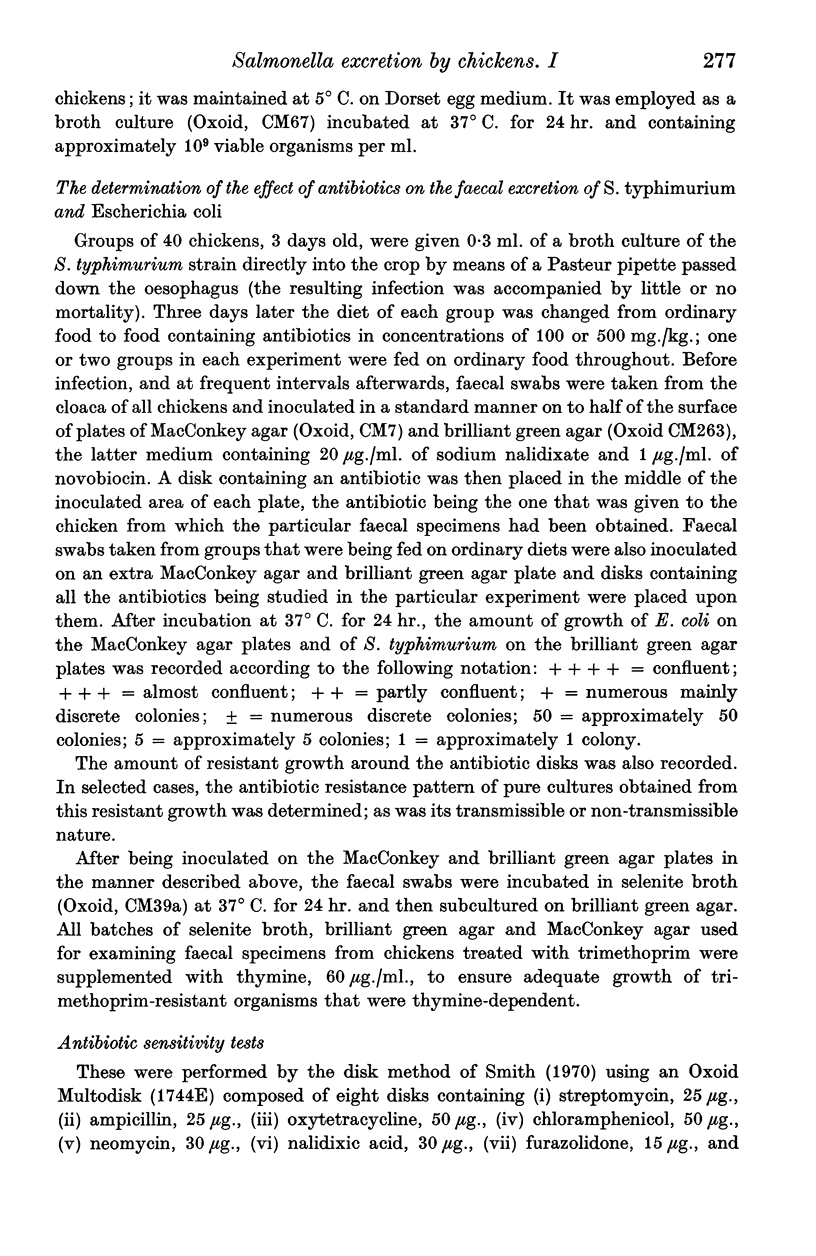

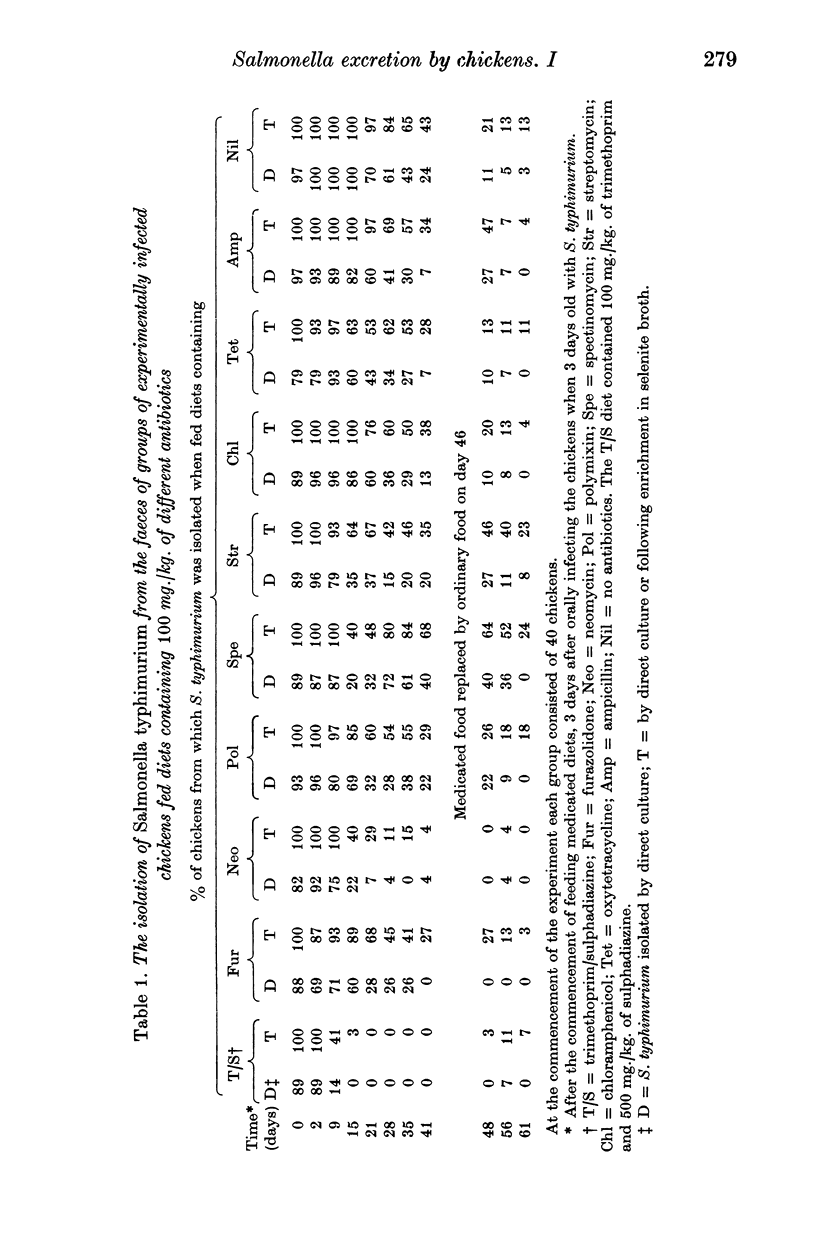


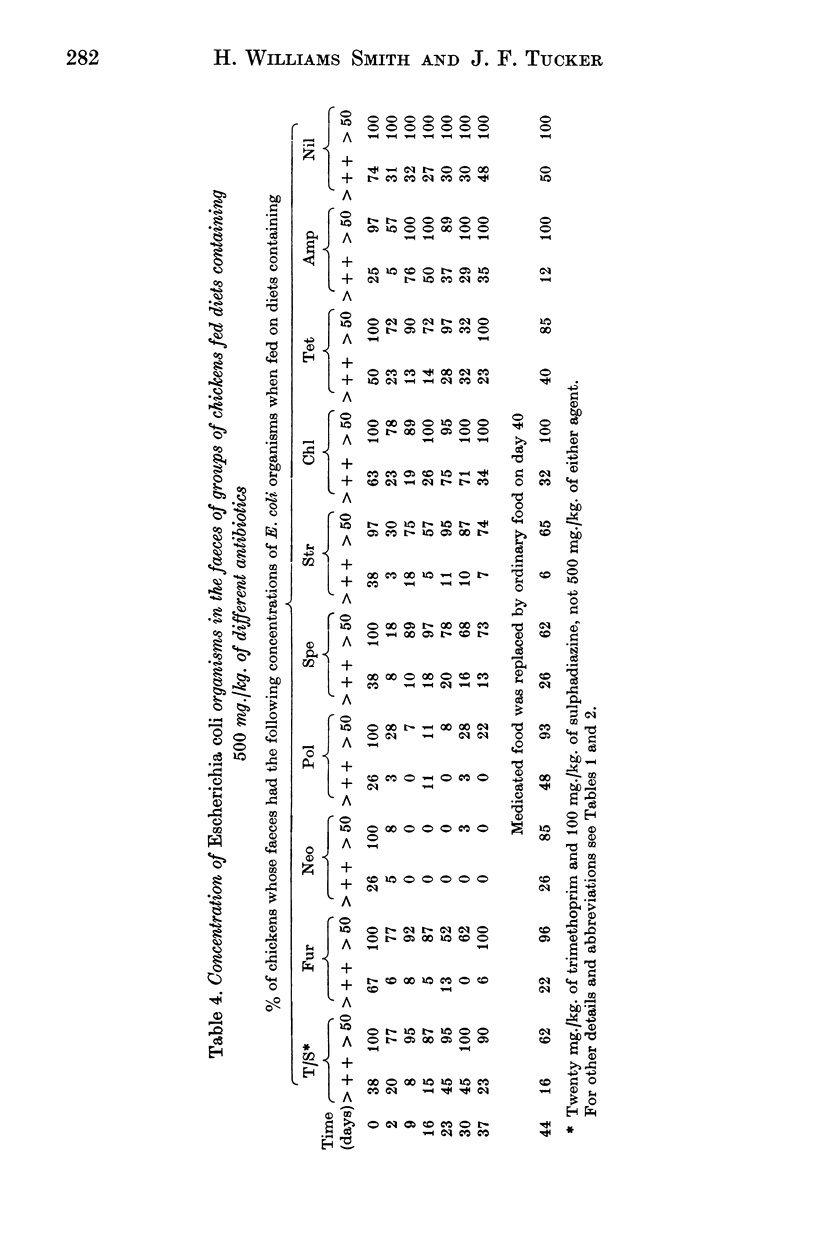








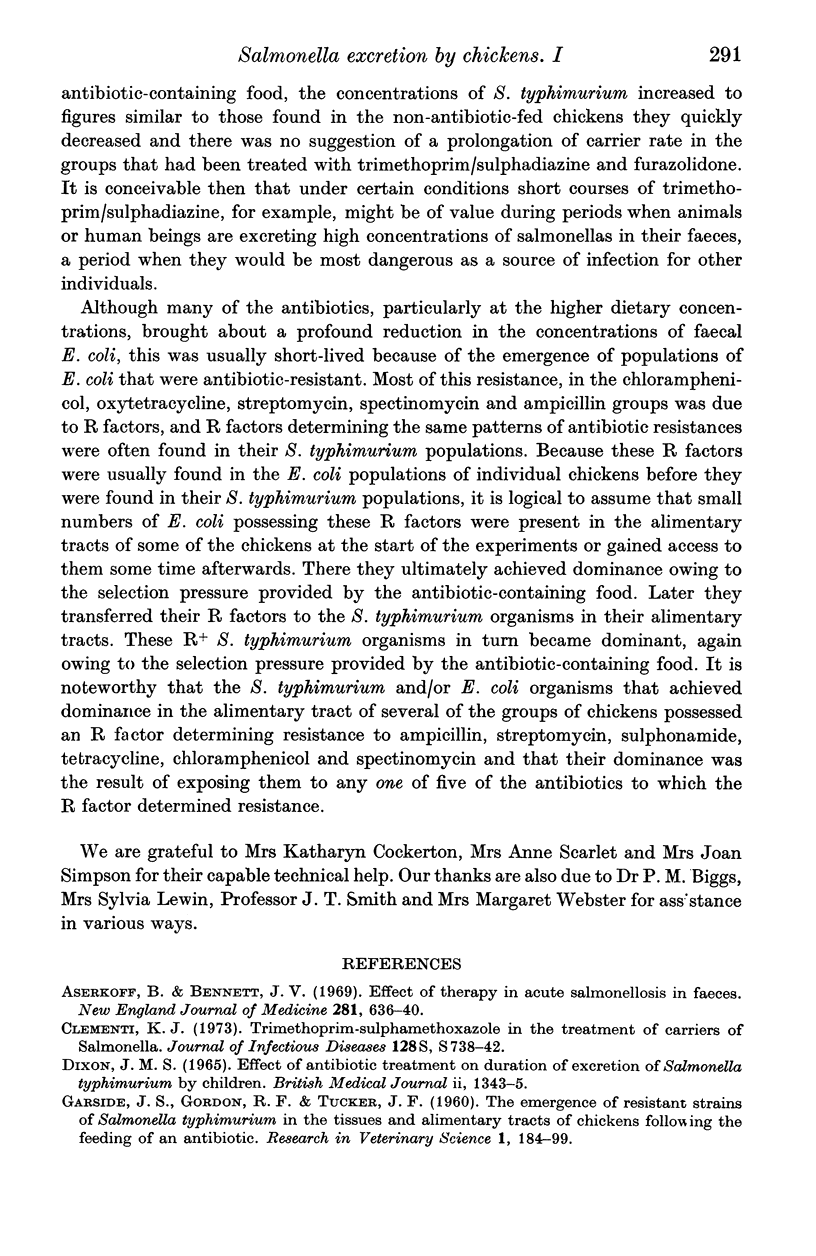
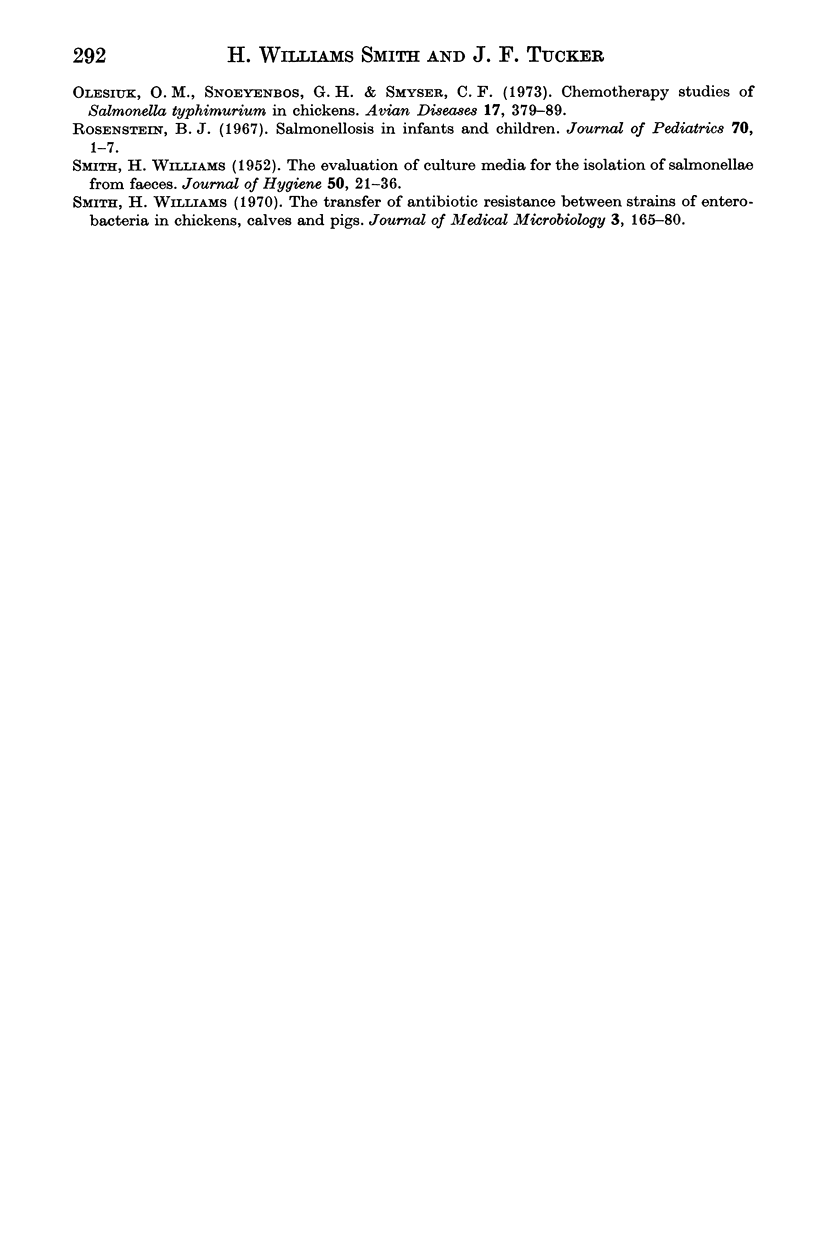
Selected References
These references are in PubMed. This may not be the complete list of references from this article.
- Aserkoff B., Bennett J. V. Effect of antibiotic therapy in acute salmonellosis on the fecal excretion of salmonellae. N Engl J Med. 1969 Sep 18;281(12):636–640. doi: 10.1056/NEJM196909182811202. [DOI] [PubMed] [Google Scholar]
- Clementi K. J. Trimethoprim-sulfamethoxazole in the treatment of carriers of Salmonella. J Infect Dis. 1973 Nov;128(Suppl):738–p. doi: 10.1093/infdis/128.supplement_3.s738. [DOI] [PubMed] [Google Scholar]
- Dixon J. M. Effect of antibiotic treatment on duration of excretion of Salmonella typhimurium by children. Br Med J. 1965 Dec 4;2(5474):1343–1345. doi: 10.1136/bmj.2.5474.1343. [DOI] [PMC free article] [PubMed] [Google Scholar]
- Olesiuk O. M., Snoeyenbos G. H., Smyser C. F. Chemotherapy studies of Salmonella typhimurium in chickens. Avian Dis. 1973 Apr-Jun;17(2):379–389. [PubMed] [Google Scholar]
- Rosenstein B. J. Salmonellosis in infants and children. J Pediatr. 1967 Jan;70(1):1–7. doi: 10.1016/s0022-3476(67)80159-8. [DOI] [PubMed] [Google Scholar]
- SMITH H. W. The evaluation of culture media for the isolation of salmonellae from faeces. J Hyg (Lond) 1952 Mar;50(1):21–36. doi: 10.1017/s0022172400019409. [DOI] [PMC free article] [PubMed] [Google Scholar]


